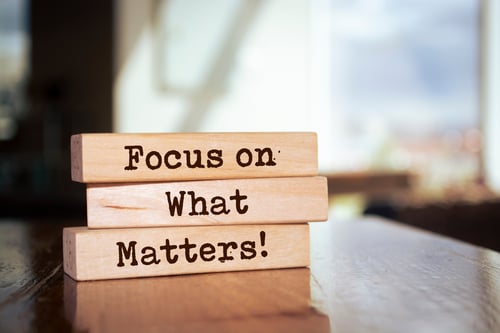A SUPER HANDY BEGINNER’S GUIDE TO UNDERSTANDING ART FILES
You’ve found the perfect piece of branded merchandise for your next event. The color, the way it feels in your hands, how it perfectly captures your brand story. It all works. Your crowd is going to love it.
Screeeeeeeeech…
Hang on a sec. We need to talk about your logo.
To begin the order process, one of the first things we’ll ask for is a vector file of your logo. Oh, and by the way, all fonts need to be outlined.
*cue the blank stare*
You check the folder on your computer (you know, the one the person before the person before you created seven years ago) and find 37 different files. Maybe one will work? Fingers crossed.
Confused and frustrated over the differences between file types? You’re not alone. (And no, you haven’t traveled through a wormhole and landed in an alternate dimension where everyone knows everything about logo art files... except for you.)
We’ve put together a little cheat sheet to help you sort through the various file types and gain a greater understanding for why only certain types of files will work for promotional products. Let’s break down the two categories of most commonly used file types:
RASTER AND VECTOR GRAPHICS
Raster graphics are composed of pixels. If you zoom in on a raster image (.jpg, .gif or .png), you’ll start to see squares. A raster image has a specific, set number of pixels. When you enlarge the image, it will look blurry. This is referred to as “pixelation.”
Vector graphics (.pdf, .eps and .ai) use hundreds of thousands of tiny lines and curves to create an image. They are often referred to as “line art.” When you enlarge a vector graphic, the math formulas do their rad thing and adjust accordingly. Vector graphics allow for flexibility and can be scaled to any size without losing quality. Whether it’s a tiny sticker or a banner hanging from a skyscraper, the image will always look sharp.
With vector graphics, colors are easily changed. A multi-color logo or logo with gradients converts to a solid, 1-color logo with a few clicks. This is important when it comes to promotional products as many items work best with a single color logo.
It’s important to note that not every .pdf file is a vector file. Don’t worry, we have a quick trick to help you determine if your .pdf file will work. Enlarge the image to more than 800%. If you see smooth curves and crisp, straight lines, your .pdf is a vector file. If the image appears fuzzy, jagged and pixelated, it’s not a vector file.
The simplified version
Raster images
File types: .jpg
.gif
.png
Become pixelated when resized
Best for website graphics and photography
Vector images
File types: .pdf
.eps
.ai
Can be scaled to any size without sacrificing quality
Used for logo files, illustrations and print layouts
I still don’t understand why a .jpg of my logo won’t work.
A .jpg file is a set image and will distort if it’s adjusted beyond the original size. Vector art allows us to scale your logo for a perfect fit, adjust colors as needed and preserve your brand integrity with the best possible imprint.
What does “outlines” or “outlined” mean?
Basically, outlining fonts means you are locking the text so it is no longer a font but instead uses vector shapes to form your letters. If we opens your file and don’t have the font you’ve used, the image will default to a generic font. Outlined files prevent this from happening.
How to sound like a boss when talking about art files.
So what files should you have on hand when placing a branded merchandise order? Adobe Illustrator (.ai) for the win! If you don’t have this in your arsenal, take the conversation back to your designer and request the correct format. “I need the horizontal and stacked AI logos with all fonts outlined” is all you need to say. Why horizontal and stacked? Because you’re a person who likes to cover all the bases. Every promotional product has a specific imprint area and imprint size. For example, a stacked logo would not look good on a pen with a 2”w x .5”h imprint area. It would only be a half-inch tall (and barely readable).
What if you only have raster files on hand? Unfortunately, there is no easy fix to convert your existing raster artwork into vector format. A vector image needs to be built from scratch in a program such as Adobe Illustrator. Start with your designer. If he or she is unable to provide the correct file type, we have creative superstars on hand to re-create your logo(s) and art for a small fee.
Working with logo files doesn’t have to be scary. Knowledge is empowering and hopefully we’ve made your job just a little bit easier with this guide. Feel free to give us a holler if you have further questions.
Now let’s create some awesome stuff!




